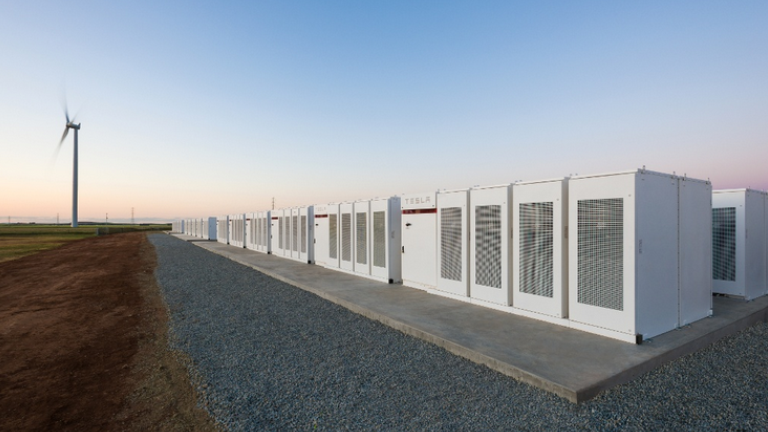The survey shows that in the National Electricity Market (NEM), which serves most of Australia, battery storage systems play an important role in providing Frequency Controlled Ancillary Services (FCAS) to the NEM grid.
That's according to a quarterly survey report published by the Australian Energy Market Operator (AEMO). The latest edition of the Australian Energy Market Operator's (AEMO) quarterly Energy Dynamics Report covers the period January 1 to March 31, 2022, highlighting developments, statistics and trends affecting Australia's National Electricity Market (NEM).
For the first time ever, battery storage accounted for the largest share of frequency regulation services provided, with a 31 per cent market share across eight different frequency control ancillary services (FCAS) markets in Australia. Coal-fired power and hydropower are tied for second place with 21% each.
In the first quarter of this year, the net revenue of battery energy storage systems in Australia's National Electricity Market (NEM) is estimated to be approximately A$12 million (US$8.3 million), an increase of 200 compared to the A$10 million in the first quarter of 2021. million Australian dollars. While this is down compared to revenue after the first quarter of last year, a comparison to the same quarter each year is likely to be fairer due to the seasonality of electricity demand patterns.
At the same time, the cost of providing frequency control fell to about A$43 million, about one-third of the costs recorded in the second, third and fourth quarters of 2021, and roughly the same as the costs recorded in the first quarter of 2021 same. However, the drop was largely due to upgrades to Queensland's transmission system, which resulted in higher prices for Frequency Control Ancillary Services (FCAS) during the state's planned outages in the first three quarters.
The Australian Energy Market Operator (AEMO) points out that while battery energy storage holds the top spot in the Frequency Controlled Ancillary Services (FCAS) market, other relatively new sources of frequency regulation such as demand response and virtual power plants (VPPs) are also starting to eat away. share provided by conventional power generation.
Battery energy storage systems are used not only to store electricity but also to generate electricity.
Perhaps the biggest takeaway for the energy storage industry is that the share of revenue from Frequency Controlled Ancillary Services (FCAS) is actually declining at the same time as revenue from energy markets.
Frequency Controlled Ancillary Services (FCAS) has been the top revenue generator for battery storage systems over the past few years, while energy applications like arbitrage have lagged far behind. According to Ben Cerini, a management consultant with energy market research firm Cornwall Insight Australia, about 80% to 90% of the revenue of battery storage systems comes from frequency control ancillary services (FCAS), and about 10% to 20% comes from energy trading.
However, in the first quarter of 2022, the Australian Energy Market Operator (AEMO) found that the proportion of total revenue captured by battery storage systems in the energy market jumped to 49% from 24% in the first quarter of 2021.
Several new large-scale energy storage projects have driven this share growth, such as the 300MW/450MWh Victorian Big Battery operating in Victoria and the 50MW/75MWh Wallgrove battery storage system in Sydney, NSW.
The Australian Energy Market Operator (AEMO) noted that the value of capacity-weighted energy arbitrage increased from A$18/MWh to A$95/MWh compared to the first quarter of 2021.
This was largely driven by the performance of Queensland's Wivenhoe hydropower station, which garnered more revenue due to the state's high electricity price volatility in the first quarter of 2021. The plant has seen a 551% increase in utilisation compared to the first quarter of 2021 and has been able to generate revenue at times above A$300/MWh. Just three days of wildly fluctuating pricing earned the facility 74% of its quarterly revenue.
Fundamental market drivers imply strong growth in energy storage capacity in Australia. The country's first new pumped-storage plant in nearly 40 years is under construction, and more pumped-storage power facilities are likely to follow. However, the market for the battery energy storage industry is expected to grow faster.
Battery energy storage system to replace coal-fired power plants in NSW has been approved.
The Australian Energy Market Operator (AEMO) said that while there is now 611MW of battery storage systems in operation in Australia's National Electricity Market (NEM), there are 26,790MW of proposed battery storage projects.
One of these is the Eraring battery storage project in NSW, a 700MW/2,800MWh battery storage project proposed by major integrated energy retailer and generator Origin Energy.
The project will be built on the site of Origin Energy's 2,880MW coal-fired power plant, which the company hopes to decommission by 2025. Its role in the local energy mix will be replaced by battery energy storage and a 2GW aggregated virtual power plant, which includes Origin's existing thermal power generation facility.
Origin Energy points out that in the evolving market structure of Australia's National Electricity Market (NEM), coal-fired power plants are being replaced by renewables, energy storage systems and other more modern technologies.
The company has announced that the NSW government's Department of Planning and Environment has approved plans for its battery energy storage project, making it the largest of its kind in Australia.
Post time: Jul-05-2022







